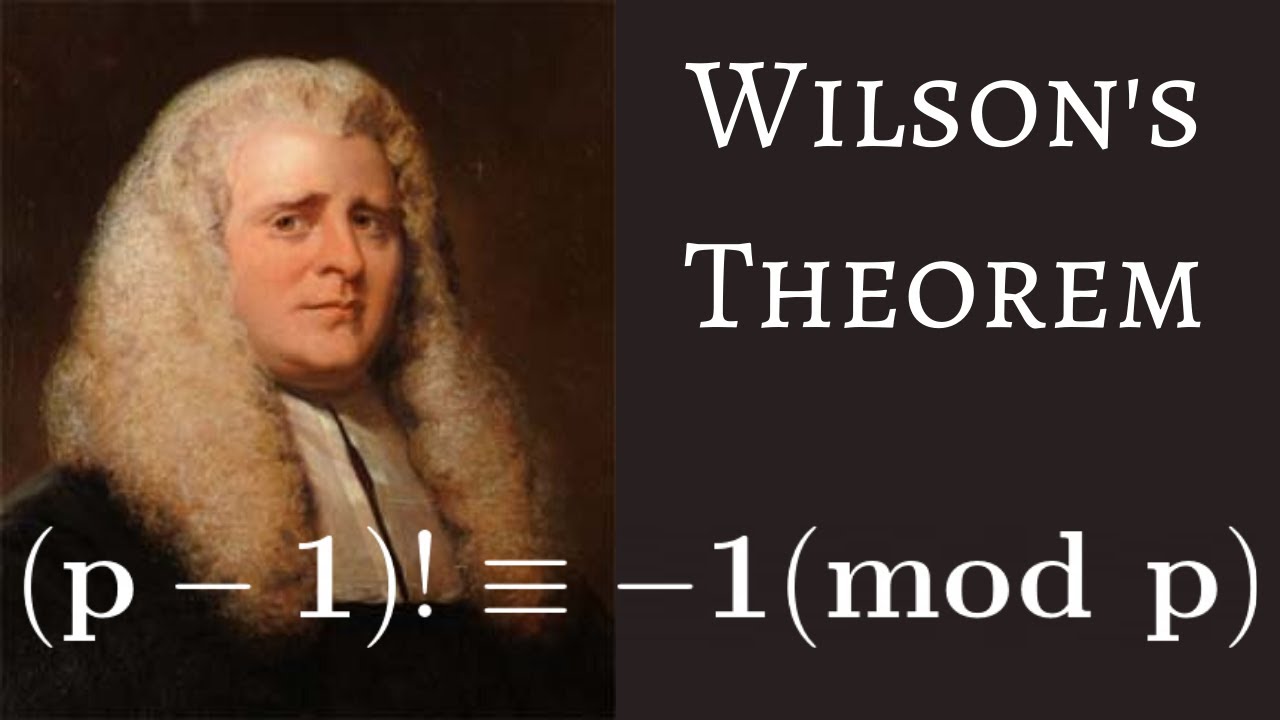
Wilson's Theorem is a fascinating concept in the realm of number theory, offering profound insights into the properties of prime numbers. This theorem, formulated by John Wilson in 1770, holds a significant place in mathematical discourse due to its elegant and thought-provoking nature. By delving into the intricacies of Wilson's Theorem, we can unravel a multitude of captivating facts that shed light on the behavior of prime numbers and their relationship to factorial functions. From its historical origins to its practical applications in cryptography and beyond, Wilson's Theorem continues to captivate mathematicians and enthusiasts alike. Let's embark on a journey to explore seven compelling facts about Wilson's Theorem, unveiling the beauty and significance of this mathematical gem.
Key Takeaways:
- Wilson’s Theorem provides a simple way to check if a number is prime, helping in cryptography and math. It’s like a secret code for unlocking the mysteries of prime numbers!
- Wilson’s Theorem connects with other math ideas and has a cool history. It’s like a treasure map leading to the hidden world of prime numbers!
Wilson's Theorem is a significant result in number theory.
Wilson's Theorem is a fundamental result in number theory, named after John Wilson, an English mathematician who first stated the theorem in This theorem provides a simple criterion for determining whether a given integer is a prime number. It has applications in various areas of mathematics and cryptography, making it a crucial concept for understanding the properties of prime numbers and their role in computational algorithms.
The theorem states that a positive integer n is a prime number if and only if (n-1)! + 1 is divisible by n.
The theorem's statement is concise yet powerful. It asserts that for a positive integer n to be prime, the factorial of n-1 incremented by 1 must be evenly divisible by n. This elegant criterion offers a unique perspective on prime numbers and has practical implications in verifying the primality of large numbers, a task of paramount importance in cryptography and secure communication protocols.
Wilson's Theorem is closely related to Fermat's Little Theorem.
Fermat's Little Theorem, a cornerstone of number theory, establishes a connection with Wilson's Theorem. Both theorems share a common thread in their exploration of prime numbers and their properties. Understanding this relationship provides deeper insights into the intricate nature of prime numbers and their significance in cryptographic systems and computational algorithms.
The theorem has applications in cryptography and primality testing.
Wilson's Theorem plays a pivotal role in cryptography, where the security of encrypted data relies on the complexity of factoring large numbers into their prime components. Additionally, the theorem's applicability extends to primality testing algorithms, contributing to the development of efficient methods for identifying prime numbers and ensuring the integrity of cryptographic protocols.
The theorem's proof involves the concept of congruences and modular arithmetic.
The elegant proof of Wilson's Theorem delves into the realm of congruences and modular arithmetic, showcasing the profound interplay between number theory and abstract algebra. This proof not only illuminates the theorem's validity but also underscores the intricate beauty of mathematical reasoning and the interconnectedness of different branches of mathematics.
Wilson's Theorem has historical significance in the development of number theory.
The theorem's historical significance is underscored by its role in shaping the landscape of number theory and its enduring impact on mathematical research. Its elegant formulation and far-reaching implications have contributed to the advancement of mathematical knowledge, inspiring further exploration of prime numbers and their intricate properties.
The theorem provides a fascinating glimpse into the enigmatic world of prime numbers.
Wilson's Theorem offers a captivating entry point into the enigmatic realm of prime numbers, unraveling their cryptic nature and unveiling the underlying patterns that govern their behavior. Exploring this theorem opens a doorway to the captivating world of number theory, where the allure of prime numbers continues to captivate mathematicians and enthusiasts alike.
This article has shed light on the captivating intricacies of Wilson's Theorem, showcasing its relevance in number theory, cryptography, and the broader landscape of mathematics. As we delve deeper into the realm of prime numbers and their properties, the elegance and significance of Wilson's Theorem become increasingly apparent, underscoring its enduring legacy in mathematical exploration and discovery.
Conclusion
In conclusion, Wilson's Theorem is a fascinating result in number theory that has intrigued mathematicians for centuries. Its application in various fields, including cryptography and computer science, underscores its significance in modern-day mathematics. Understanding the intricacies of Wilson's Theorem can provide valuable insights into the properties of prime numbers and their role in mathematical algorithms. As we continue to explore the depths of number theory, Wilson's Theorem stands as a testament to the enduring allure of mathematical discovery.
FAQs
What is the significance of Wilson's Theorem in modern mathematics?Wilson's Theorem holds significance in modern mathematics due to its applications in cryptography and computer science. It provides insights into the properties of prime numbers, which are fundamental in various mathematical algorithms and encryption techniques.
How does Wilson's Theorem contribute to the study of number theory?Wilson's Theorem contributes to the study of number theory by offering a unique perspective on the properties of prime numbers. It provides a framework for understanding the relationships between prime numbers and their role in mathematical concepts and applications.
Was this page helpful?
Our commitment to delivering trustworthy and engaging content is at the heart of what we do. Each fact on our site is contributed by real users like you, bringing a wealth of diverse insights and information. To ensure the highest standards of accuracy and reliability, our dedicated editors meticulously review each submission. This process guarantees that the facts we share are not only fascinating but also credible. Trust in our commitment to quality and authenticity as you explore and learn with us.
